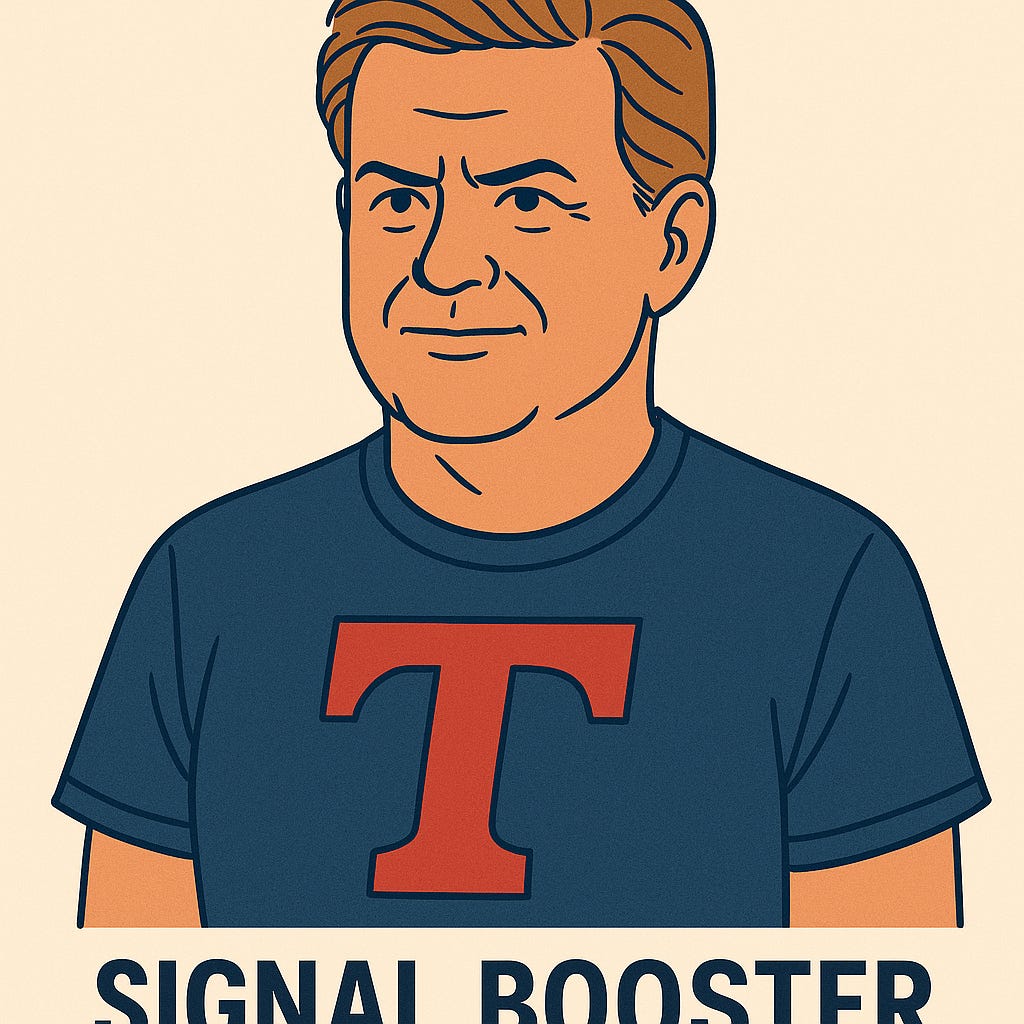How to Persuade Each GOP Voter Type—And Track Them Before Polling Can
Messaging, Monitoring, and Mobilizing the Voters Who Actually Decide Republican Primaries
In my last post (before the Kirk memorial piece), I outlined the 7 behavioral voter types shaping the modern Republican primary—and why most campaigns only target two of them.
This post gets tactical.
I’ll break down:
How to communicate with each group
Where to reach them
What emotional signals to track
And how to use sentiment analysis as your real-time compass
Each type has a different trigger. A different tone. A different path to conversion.
Most campaigns are still running one-size-fits-all messaging strategies.
Let’s fix that.
Recap: The 7 Voter Types
No, I still don’t know how to do a table on Substack.
Messaging & Monitoring by Voter Type
1. Signal Booster
Use For: Amplification—not persuasion
Tone: Red meat, identity-affirming
Channel: Twitter/X, Truth Social, campaign emails, texting
Sentiment Signal: Volume & meme velocity
Recent Example: Kari Lake’s Arizona Senate launch saw immediate boosts from this group—but didn’t translate into broader appeal.
📚 Research: Mason (2018) shows these voters express politics as tribal loyalty, not issue preference. Over-targeting them limits reach.
🧠 Tip: Don’t confuse volume with persuasion. They’re your echo—not your amplifier.
2. Narrative Converter
Use For: Persuasion after opinion shifts
Tone: Story-driven, emotion-first
Channel: YouTube, Facebook Watch, short-form video delivered via texting
Sentiment Signal: Shifts in shared headlines, meme reframing
Recent Example: In 2024, many GOP candidates saw polling movement in suburban districts only after crime became the lead story on local media.
📚 Research: Zaller’s RAS Model (1992) explains how media elites shape public opinion—voters absorb narratives after they’ve been framed, not before. Also, apologies for linking to Wikipedia, but it does a really good job of summarizing RAS.
🧠 Tip: Test emotionally resonant video content. Watch for their engagement after a cultural flashpoint hits.
3. Cultural Contrarian
Use For: Mobilization around backlash
Tone: Anti-elite, non-PC, humorous or mocking
Channel: X, Podcasts, YouTube comments, Telegram
Sentiment Signal: Sarcasm, ridicule, and spikes in anti-narrative language
Recent Example: Ron DeSantis’ peak primary moment came not from his policies, but from his high-profile fights with Disney and the media.
📚 Research: Mason (2018), Iyengar & Lelkes (2017)—these voters are defined more by what they oppose than what they support.
🧠 Tip: When mainstream media frames the right as extreme, this group activates—but only when the response feels defiant, not polished.
4. Silent Resistor
Use For: Deep persuasion via peer proxies
Tone: Respectful, values-based—not overtly political
Channel: Text messages, door-to-door, small group influencers
Sentiment Signal: Indirect engagement—watch for surrogates moving in closed spaces
Recent Example: Shy Trump voters in both 2016 and 2020 consistently under-polled—but surged in high-trust local networks (churches, PTAs, etc.)
📚 Research: Brownback & Novotny (2017)—social desirability bias drives these voters underground in polling and social platforms.
🧠 Tip: Don’t expect them to respond to polling or even post. Track the micro-surrogates in their communities instead.
5. Backlash Parent
Use For: Activation in response to cultural policy
Tone: Protective, urgent, family-first
Channel: Facebook groups, local news, school board meetups, door to door
Sentiment Signal: Emotional spikes—especially around gender, safety, parental rights
Recent Example: Loudoun County’s school board battles helped drive turnout and votes for Youngkin in Virginia 2021, especially among previously disengaged parents.
📚 Research: Eitan Hersh (2020) distinguishes between political hobbyists and truly “activated” citizens—this group shifts from passive to political in a flash.
🧠 Tip: Track keyword spikes around “my kid,” “my daughter,” “school,” “unsafe,” and “they didn’t tell us.” Sentiment surges = go time.
6. Reluctant Tribalist
Use For: Reassurance, not agitation
Tone: Calm, rational, competent—not performative
Channel: Op-eds, podcasts, LinkedIn, emails
Sentiment Signal: Engagement with tone-shifting content—moderate, sober, unifying
Recent Example: In 2022 governor’s races, candidates like Brian Kemp (GA), Joe Lombardo (NV) and Chris Sununu (NH) won over this group not with red meat bravado—but by projecting steady leadership and deflecting extremes.
📚 Research: Iyengar & Westwood (2015)—negative partisanship is rising, but this group resists tribal cues from both sides.
🧠 Tip: Avoid sarcasm and outrage. This group respects control more than charisma.
7. Attention Undecided
Use For: Last-mile persuasion
Tone: Emotional clarity. Single-issue or kitchen-table appeal.
Channel: Direct mail, targeted digital, broadcast TV (broadcast hits all 7 groups, but my point here is to save the campaign money while making actionable recommendations)
Sentiment Signal: Spikes in interest on singular issues (gas prices, crime, jobs)
Recent Example: In late 2024, generic Republican ballot support surged in districts where inflation became the #1 concern—even among low-engagement voters.
📚 Research: Barber & Pope (2019)—low-information voters act more like consumers than ideologues. Relevance beats policy.
🧠 Tip: Watch Google Trends. When they start searching, it’s time to speak plainly—and fast. In 2016, on Cruz for President, Google Trends would accurately predict a state hours before the polls closed.
Final Takeaway
Winning a GOP primary isn’t about who shouts the loudest—it’s about who reads the room first.
And you can’t read the room with polling alone.
Use:
Polling to confirm
Analytics to model and target
Sentiment to detect & act
The best campaigns will message with precision, move with timing, and monitor emotion like it’s a battlefield.
Want to use this model in your campaign strategy? Let’s talk.









